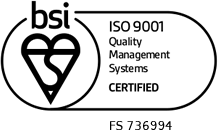In recent times the medical and healthcare sector has benefited from advanced materials development in novel sensing materials, including biospecific sensors systems for a range of applications, ergonomic materials for prosthetics, in audiology and neuroscience for example novel cochlear ear implants, micro and nanotech developments especially in relation to biocompatibility for personalised medicine, wound repair, smart skin and other healing technologies, drug delivery systems, tribological behaviour for implants, metamaterials for perfect lenses and enhanced MRI imaging and much more.
Piezoelectric Applications in Medical, Healthcare and Biotech
Among the various areas in which piezoelectricity finds applications, healthcare is clearly the major one, especially through improved diagnostic and therapy systems.
The implementation of piezoelectric technology in the healthcare sector has been very successful over the past decade and this trend is expected to continue. Piezoelectric-based applications in the medical field are multifaceted and continue to expand. Indeed, such applications are among the most rapidly changing, and are thus major drivers for the development of new materials and related technologies. They also represent a very large market, in the order of €9 billion for medical ultrasonics alone, 10% of which is devoted to piezoelectric-based probes.
Among the various applications of piezoelectricity in the healthcare area, ultrasonic medical imaging, or Sonography, is perhaps the best known. Obstetric sonography is commonly used during pregnancy. Ultrasound imaging works by sending out and receiving high frequency sound waves to build up a picture (sonogram) of the internal structure of patients, enabling the visualization of mainly soft tissues such as internal organs and muscles, their sizes, structures and possible pathologies or lesions. Ultrasound Sonography relies on affordable, reliable, high acoustic frequency piezoelectric probes (piezoelectric transducers and sensors). Capital equipment costs and operating costs are orders of magnitude lower than those of other imaging technologies, such as CT scan and MRI.
Piezoelectric transducers are used in many other medical diagnostic and therapeutic applications: For example, recent applications of piezoelectricity are used for arterial blood flow measurements using the Doppler effect, miniaturized disposable probes for blood vessels and inside heart inspection, as well as non-invasive ultrasonic surgery and localised drug delivery systems.
Piezoelectric sensors are also used in a great number of biomedical applications. As sensors, the opportunities for piezoelectric-based devices and materials are wide and lucrative. They can be used in a wide range of patient monitoring applications – for example: heart monitoring, pacemakers, blood pressure monitoring, bubble line sensors, pressure, acceleration, and chemical sensors, and so on. Such devices feature large in the successful development of telemedicine and remote care services.
Cytopathology, cell imaging, material handling, and MRI compatible robots and manipulators, are just some of the areas where piezoelectric ceramic servo motor technology is currently applied. Providing the highest force per motor size has allowed the medical equipment manufacturers to reduce the size of the machines, whilst increasing performance. Piezoelectric non-magnetic motors are MRI compatible, allowing motor operation during the MRI process.
Medical therapy based on high-power ultrasonic waves is a rapidly developing field. Here again, practically all devices are based on piezoelectric materials. Classical applications include physiotherapy, where sound waves are used to accelerate healing process, in combination with exercises and massage, and non-invasive kidney stone destruction by acoustic shock waves. More recently, high intensity focused ultrasound (HIFU) has been used to treat cancer by destroying tumours with heat – highly localised temperatures of over 80°C are produced by piezo induced sonic waves. This non-invasive technique is very promising for prostate and other cancers where surgical procedures are problematic. Other applications of HIFU include uterine fibroma treatment, as well as a non-invasive alternative to plastic surgery of cellulite.
When it becomes necessary to intervene surgically, piezoelectric materials are helping to make the procedures safer, quicker and less invasive; helping to guide the surgeon’s cuts using ultrasound imaging; piezoelectrically actuated cutting knives delivering cleaner cuts that heal more rapidly; breaking up gall stones using high energy ultrasound waves. In the near future, piezoelectric micromanipulators may even help surgeons undertake complex micro-key-hole surgery.
With advances in miniaturisation, ultrasound scanners can even be inserted into veins and miniature speakers used to create a new generation of hearing aids that are almost invisible.
Audible devices are yet another application in healthcare. They are present in bed-side instrumentation and hand-held devices and add value by increasing healthcare worker awareness. The size, cost, and diversity of audible signals generated are all notable features that allow piezoelectric materials to excel in this segment.
Finally, it can be stated that piezoelectric technology will allow the combination of different functionalities in a single system, for instance several diagnostic modules that the physician can combine to obtain a higher certainty of his conclusions.



